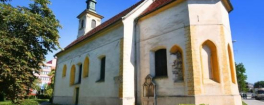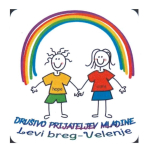Concert: Schola Romana Ensemble (IT)
Schola Romana Ensemble (IT)
Paola Alonzi, soprano
Franco Todde, tenor and renaissance guitar
Lorenzo Sabene, lute
Stefano Sabene, renaissance transverse flute

Ticket order:
They say this is the greatest love song of all time. Composer Palestrina represents the creative pinnacle closing the musical Renaissance. In the Song of Songs, he masterfully weaves refined polyphony with lyrical Renaissance emotion.
Complex
Artists’ message to visitors:
The Song of Songs is regarded as the greatest love poem of all time. In his Fourth Book of Motets, Palestrina selects this biblical text to experiment with a novel compositional form that blends elements of both the sacred motet and the secular madrigal. The composer himself noted this unique approach in the original 1587 publication. Our representative interpretation is brought to life through vocal roles and varied arrangements, designed to visually capture the “fresco” painted by the author of the sacred text. This vision is illuminated by the time of singing (Song of Songs 2:12), reflected in the changing of seasons, the cycle of day and night, the blowing of winds, and the movement of stars. Palestrina's music captures this passage of time with striking sensitivity, evoking the colours, sounds, and scents of the Middle Eastern setting in which the protagonists move — more effectively than words or analysis ever could.
Our artistic mission:
Schola Romana Ensemble is a group specialising in early music, based in Rome. Our approach to artistic design is synaesthetic. Our programmes often engage in dialogue with other disciplines and artistic languages such as theatre, dance, literature, architecture, and cinema, offering today’s listener a multi-layered experience of music from the past. Driven by a strong vocation for musicological research and experimentation, we explore a wide repertoire that ranges from the music of ancient Rome — including reconstructions of historical instruments — to medieval Europe and the Renaissance and Baroque repertoire, with a particular focus on the Roman school. Within this context, we have paid special attention to the performance practice of a cappella polyphony, particularly through the rediscovery of so-called “just intonation.”
Live broadcast: Radio Slovenija
Welcome !
Event programme
Palestrina: Canticum Canticorum
Palestrina never abandoned the polyphonic style, for which he stands as both the pinnacle and its final evolution. Among all the compositions by the Princeps musicae, the Song of Songs is the most representative. It seems to glimpse, albeit distantly, the early experiments of Recitar cantando, which would eventually lead to the grand era of opera. Our interpretation of the work, stemming from these musicological insights, takes a different path from the traditional a cappella vocal arrangement. Only the melodic lines of the two protagonists, Shulamite and Solomon, are sung, while the remaining parts are played by instruments like the Renaissance transverse flute, Renaissance guitar, and lute. This approach creates a varied sonic tapestry, blending the expansive phrasing and rich sound of the voices and flute with the crystalline airiness of the plucked instruments.
Giovanni Pierluigi da Palestrina (1525-1594):
Iz / from: IOAN: PETRALOYSII / PRAENESTINI / MOTTETORVM / Quinq; Vocibus / LIBER QVARTVS, EX CANTICIS / Sakimonis, Nunc denuo in lucem aeditus. / Venetijs Apus Angelum Gardanum / M.D.LXXXVII.
Osculetur me
Trahe me
Nigra sum
Si ignoras te
Pulchre sunt
Fasciculus Mhyrrae
Ecce tu pulcher es
Vulnerasti cor meum
Sicut lilium
Laeva ejus
Vox dilecti mei
Surge propera
Surge amica mea
Surgam et circuibo
Adjuro vos
Caput ejus
Quae est ista
Guttur tuum
Veni dilecte mi
Giovanni Pierluigi da Palestrina dedicated his substantial work, the Fourth Book of Motets, to the Song of Songs. The literary source is the Latin version of the Bible, the Vulgate, which is specific to the Catholic Church. The modern version in the listening guide is by the project’s author and is based on the most recent exegetical studies of the original Hebrew, resulting in some differences between the two texts.
During the 16th century, the allegorical interpretation of biblical texts was prevalent. The mystic St Teresa of Ávila, while meditating on the Song of Songs, follows a path that leads from carnal love to spiritual ecstasy. The love between Solomon and the Shulammite was, in an even more widespread allegory, a representation of Christ’s love for the Church.
In the dedication of the book to Pope Gregory XIII, Palestrina states that he relates the text to Christ’s love for the soul, presenting yet another spiritual allegory. However, the musical nature of the pieces seems to express the very human dynamics of love between a man and a woman, adhering to the literal sense of the text, which is the prevailing interpretative thesis among current exegetes.
According to these scholars, the text unfolds as a sequence of poetic scenes that explore themes and expressions typical of human love: mutual and exclusive belonging, the continual losing and finding of one another, tenderness, passion, and even subtly erotic traits.
It is worthwhile to question Palestrina’s choice to set to music a text with such implications, particularly in light of the redemptive intent of the book following the publication of profane madrigals, which would have been inappropriate for a composer serving the Church. This situation prompted the composer to acts of sorrow and repentance, as noted in the dedication.
The protagonists of the poem are Solomon—who, in the literary tradition, is credited with its authorship—and the Shulammite. In the background, her group of female friends and his male companions move and occasionally interact with them.
Representative music?
Formally, the work can be seen as a hybrid between the sacred motet and the secular madrigal. Palestrina himself highlights the originality of the collection, which is crafted in a style more “lively” than the ecclesiastical format. He employs a sophisticated writing style that blends the traits of the sacred motet with those of the profane madrigal.
This approach contrasts with that taken by several other composers, including Palestrina himself, who moved from madrigal to sacred music, creating a distinct form known as the spiritual madrigal. These elements reinforce the notion that the Fourth Book is a unique work, both within the composer’s output and in the broader context of Renaissance music.
In approaching this book, Palestrina appears to glance, albeit cautiously, towards musical forms such as the representative madrigal, advocated by composers such as Banchieri, Gastoldi, and Vecchi, with Monteverdi as its most prominent exponent.
It is likely that the composer from Palestrina drew inspiration from these trends, as well as from intermedi—scenic performances with music popular at court—and the emerging recitative style. While formally adhering to the motet genre, he masterfully interprets the narrative needs of the text. The result of this stylistic exploration is highly original, expanding the sacred form in a representative manner.
To support our thesis about the representative nature of the work, we present several pieces of evidence. The first is the dramaturgical intent with which Palestrina sequences the selected text. Through interventions reminiscent of a librettist (a role not yet fully developed at the time), focusing solely on the choice and arrangement of verses, the composer creates not only a coherent narrative but also a distinctly theatrical quality.
A second piece of evidence lies in the careful handling of dialogues between characters, which Palestrina incorporates within individual motets, between motets, or across groups of motets. The continuity of text between two motets was common practice and is marked in the score by terms like prima pars and secunda pars. However, in the Song of Songs, this textual relationship serves a representative rather than a liturgical function.
Another point supporting this thesis is the division of the work into sections resembling scenes or tableaux, facilitated by the precise organisation of the motets into modal groups. Renaissance polyphony is based on a rich variety of scales, or modes, which offer a more nuanced palette of musical colours than the major-minor system of modern tonality.
Palestrina assigns a mode to each textual section, shaping its expressive atmosphere and creating a kind of sonic scenery. Protus, comprising Chapters 1 and 4, contains the first ten motets; Tetrardus covers Chapters 2 and 3 with motets 11 to 18; there is a single motet in the Aeolian mode, number 19; Deuterus spans Chapters 5 and 6 with motets 20 to 24; and finally Tritus, Chapter 7, includes motets 25 to 29.
This sequence lends each textual unit a distinctive musical colour, though with flexibility. For example, motets 18, 19, and 20—closely connected narratively—are in three different modes, transitioning from Tetrardus to Deuterus, with the unique Aeolian mode between them.
In composing the Cantico, Palestrina demonstrates his extraordinary mastery of polyphonic technique. The perfection of the melodic lines and contrapuntal elaboration arises from the text itself, which develops across the book through both imitative and homorhythmic structures. The result is a presentation rich in madrigalisms, intensifications, and rarefactions of texture, offering a strikingly diverse range of compositional solutions. From this emerges a sumptuous musical fresco, marked by Palestrina’s supreme control of language and the naturalness that define the princeps musicae.
Interpretative approaches
The concertations we propose depart from the traditional a cappella vocal setting. We have assigned the melodic lines of the two protagonists—the Shulammite and Solomon—to a soprano and a tenor, suggesting a theatrical interpretation consistent with the project’s vision.
The other melodic lines are entrusted to Renaissance instruments such as flute, four-course guitar, and lute, enhancing the phrasing and sustaining capabilities of the wind instruments and adding the crystalline clarity of plucked strings.
This timbral variety ranges from the rarefied texture of purely instrumental sections to the denser choral texture of mixed vocal-instrumental combinations, allowing full expression of the music’s emotional nuances. One of the advantages of this concerted approach is the clear intelligibility of the text—something not always achieved in performances of five-part vocal works.
In this way, we offer a non-conventional but historically informed reading of the work. Although in sacred contexts the a cappella style was standard, Palestrina’s own statements place this motet collection in a liminal zone close to the madrigal, where instruments were commonly used to double or replace voices.
Our aim is to render the author’s sacred fresco almost visually, using the variety of concertations to illustrate the “time of singing” (Ct 2:12) amid changing seasons, winds, day and night, and the movement of the stars. This evocative moment is captured magnificently by Palestrina’s music, which expresses the colours, sounds, and scents of the Middle Eastern setting more eloquently than many words or interpretations ever could.
(Stefano Sabene)
Celje, Cathedral Church of St. Danijel

It is certainly the parish of St. Danijela was created as early as the 12th century, when the first large parishes of the then Ogle Patriarchate were created, as the first known pastor was already known in 1129, that is Rudbert. Certainly, at that time there was already a church here, which was called the parish church for many centuries.
















